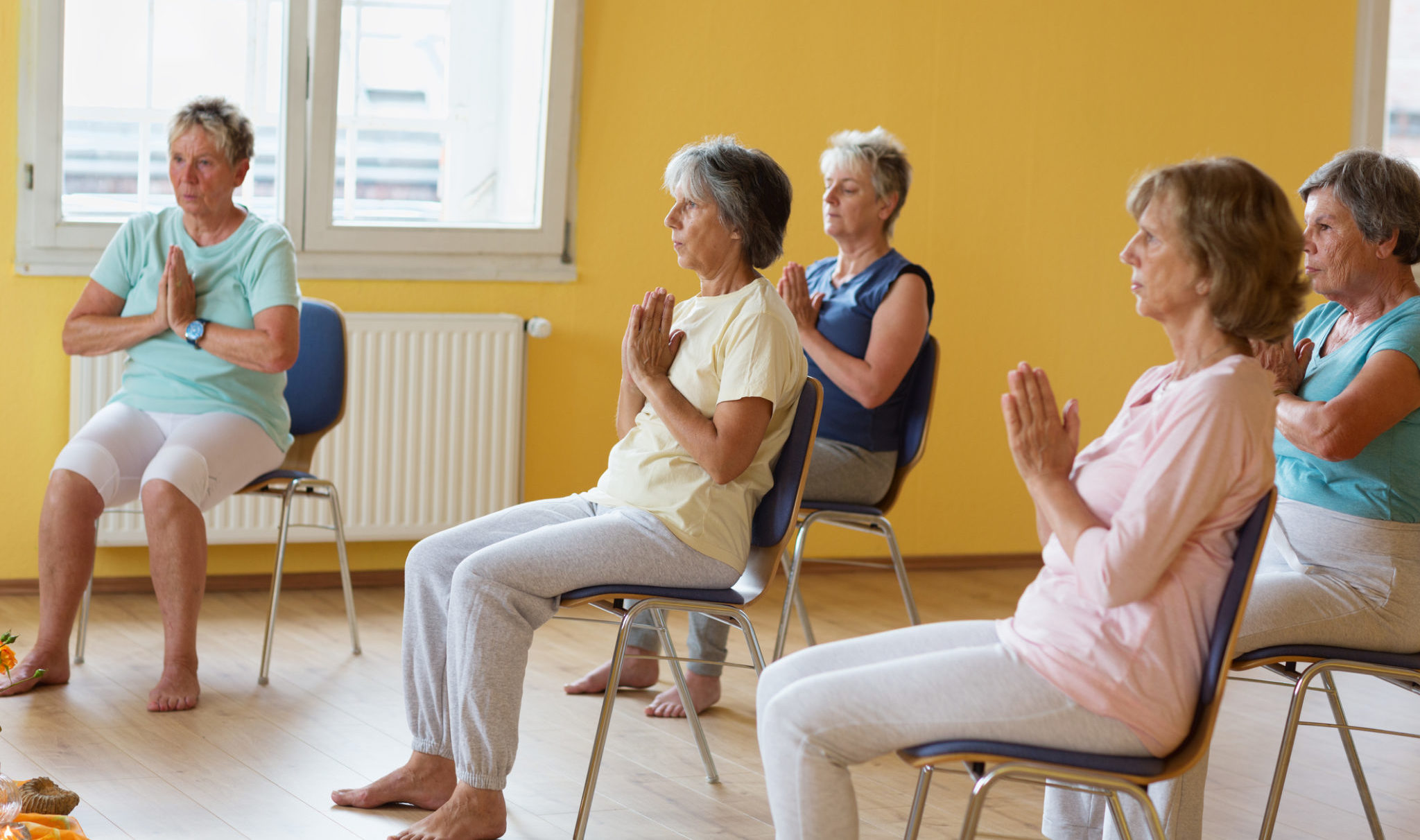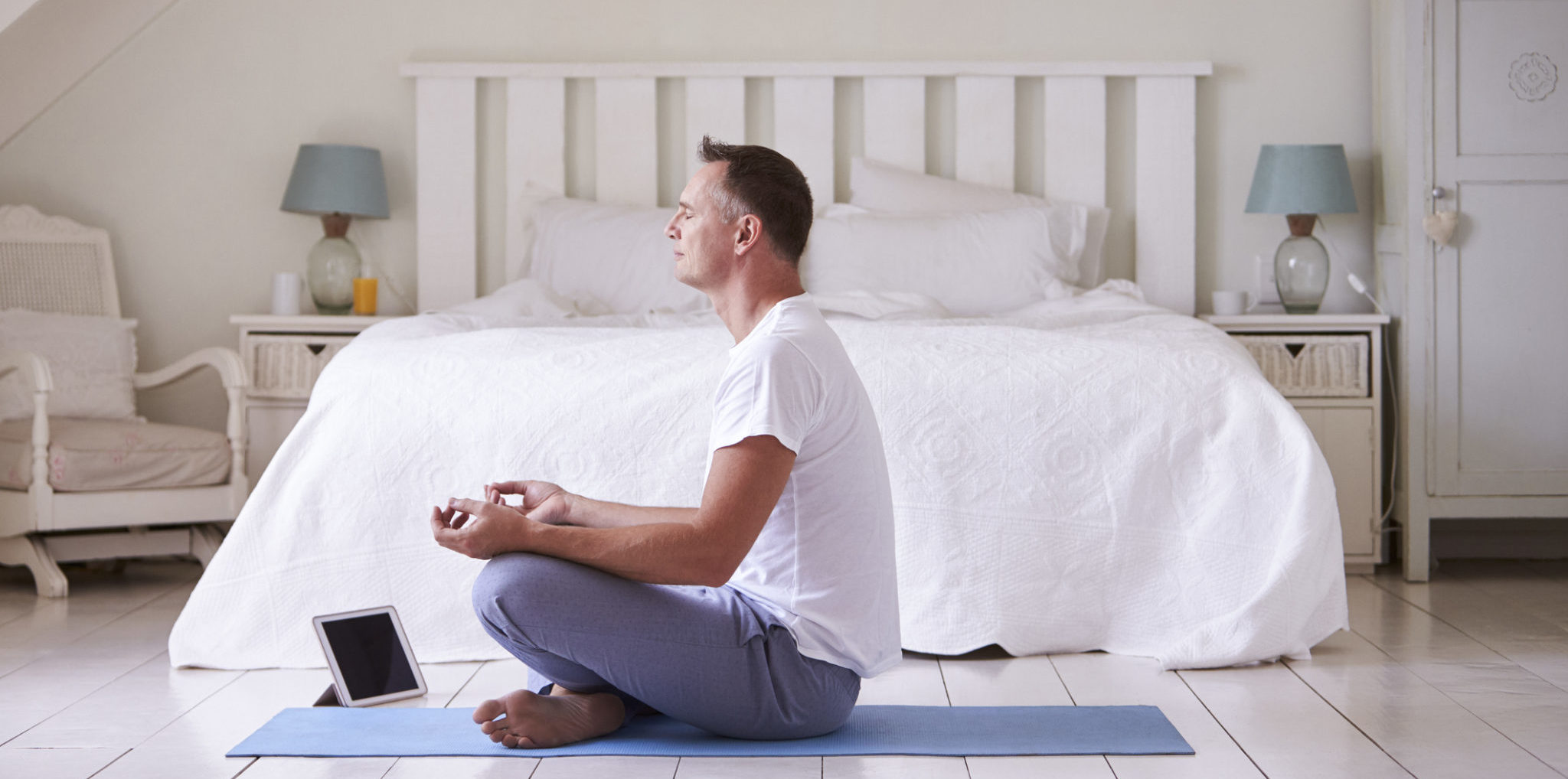Practicing mindfulness is a way to ground yourself in the midst of powerful, overwhelming emotions that exhaust the body and mind. If you’re living with grief, anxiety, depression, chronic pain or everyday stress, mindfulness can help you cope or heal.
People going through tough times often feel lost or outside of themselves, like nothing’s the same. “It’s hard to prioritize. Everything seems equally important and urgent,” says Alex Zima, grief counselor for HopeHealth.
To be mindful is to become aware of your emotions, thoughts and sensations in the moment. Research shows engaging in mindfulness practices can help you reduce stress, increase emotional resilience, sleep better, develop an attitude of self-care and discover new meaning after suffering a loss or experiencing a traumatic event.
The practice of mindfulness is free and accessible to everyone. Sit or walk, think or write, go low-tech or high-tech—there’s a technique for everyone. Read on for five ways to get started.
If you’re physically unable to sit during meditation, lying down is just fine.
#1: Sit mindfully.

Formal meditation, also known as sitting meditation, is a common and accessible way to cultivate the natural state of mindfulness. To do it you need three things:
- Space. Find a quiet space with minimal distractions, ideally the same place each time to build a habit. If you’re physically unable to sit during meditation, lying down is just fine.
- Time. Set a timer on your watch, phone or microwave and make sure the chime is not jarring. Start with just three to five minutes if you’re new to meditation.
- Comfort. Use pillows or supports if you need them, and don’t be afraid to adjust your body posture during the meditation. “This is not a no-pain, no-gain practice,” Alex says.
Once you’re comfortable, focus your awareness on any sensation of the body, such as:
- your breath
- your posture
- feelings of warmth or coolness
- your feet on the ground
- your body’s contact with the cushion
- the touch of cloth against your skin
After feeling the emotion, let it be as it is and refocus your attention on the sensation of your body.
Your mind will wander while meditating, often to a to-do or strong emotion like regret or sadness. When this happens, don’t respond to or judge the emotion, but rather acknowledge and accept it.
“We can feel what we’re feeling, whether it’s just a busy mind, random thoughts or something a little deeper like grief or some other powerful emotions,” Alex says. After feeling the emotion, let it be as it is and refocus your attention on the sensation of your body.
2. Walk mindfully.

Walking meditation applies the principles of sitting meditation to a body in motion. Focus on the the sensation of your feet as they rise and fall. When your mind drifts, bring your attention back to your feet.
Walking meditation is convenient and flexible. Step outside or simply pace back and forth along a five-foot path in your home.
If you use a wheelchair or cane, bring awareness to the process of wheeling yourself or walking with your cane or walker. “Meditation can always be adapted to your form of mobility,” Alex explains.
3. Write mindfully.

Some people prefer a pen and paper (or computer) to practice mindfulness. Similar to meditation, journaling allows you to acknowledge your feelings and thoughts in the moment.
“Writing down your feelings helps you take a step back from your feelings and your thoughts—rather than having them rain on you—and brings intentionality to your feelings,” Alex explains.
Journaling also has the added benefit of preserving your thoughts for deeper reflection at a later time.
“Even in silence, there’s an energy in a [mindfulness] group that can really make the practice more accessible for people.”
4. Attend a mindfulness workshop.

Some people prefer a social setting to practice mindfulness. Look for a yoga studio, meditation center or counseling center in your area that offers mindfulness workshops. HopeHealth offers two grief support groups with a focus on meditation and mindfulness.
“The benefit of a workshop and live teacher is they can better customize the practice for you, get a better sense of who you are and what your particular goals and challenges are,” Alex says.
Many practitioners find being with others makes it easier to maintain a mindful or meditative state. “Even in silence, there’s an energy in a group that can really make the practice more accessible for people,” he adds.
For people working through grief, HopeHealth offers a mindfulness meditation and discussion group at the HopeHealth Hulitar Hospice Center in Providence, RI. For more information or to register, visit our grief support group page or call (888) 528-9077.
5. Use a mindfulness phone or tablet app.

What if you don’t have the time or resources to visit a mindfulness group? You can download an app to your smartphone, tablet or computer.
Phone app stores offers hundreds of mindfulness apps that simulate the experience of guided meditation. “Feel free to experiment,” says Alex. “You can try different styles, different teachers, different voices, until you find one that fits you.”
InsightTimer is a good pick, according to Alex. This free app offers more than 2,000 guided meditations on topics like stress, sleep, grief, gratitude and nature sounds.
No matter which mindfulness technique you choose, listen to your body. “This is a very intuitive practice,” Alex advises. “Always trust your instincts about what’s working and what’s not.”
Do you need help working through grief or the stress of caring for someone with a serious illness? HopeHealth can help. Contact us at at (888) 528-9077 or Information@HopeHealthCo.org.

